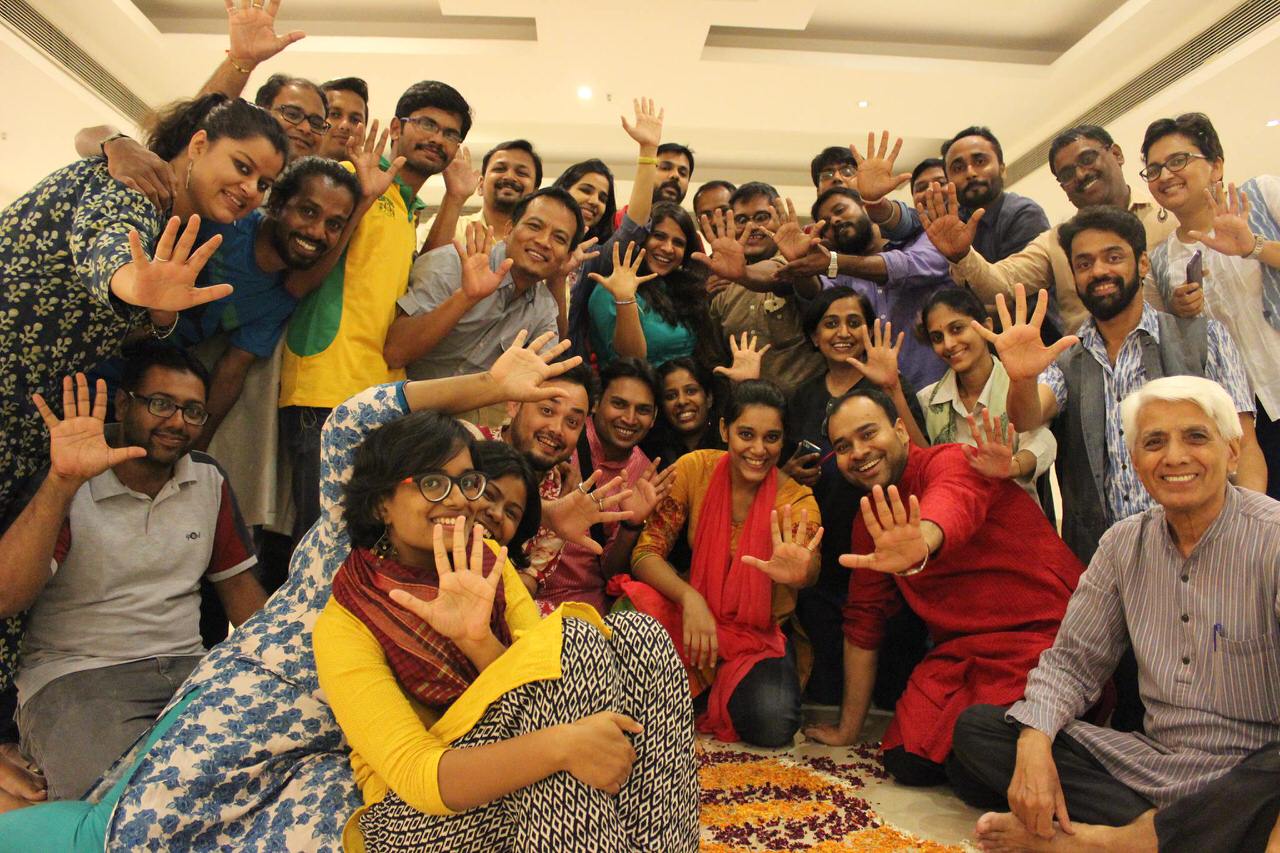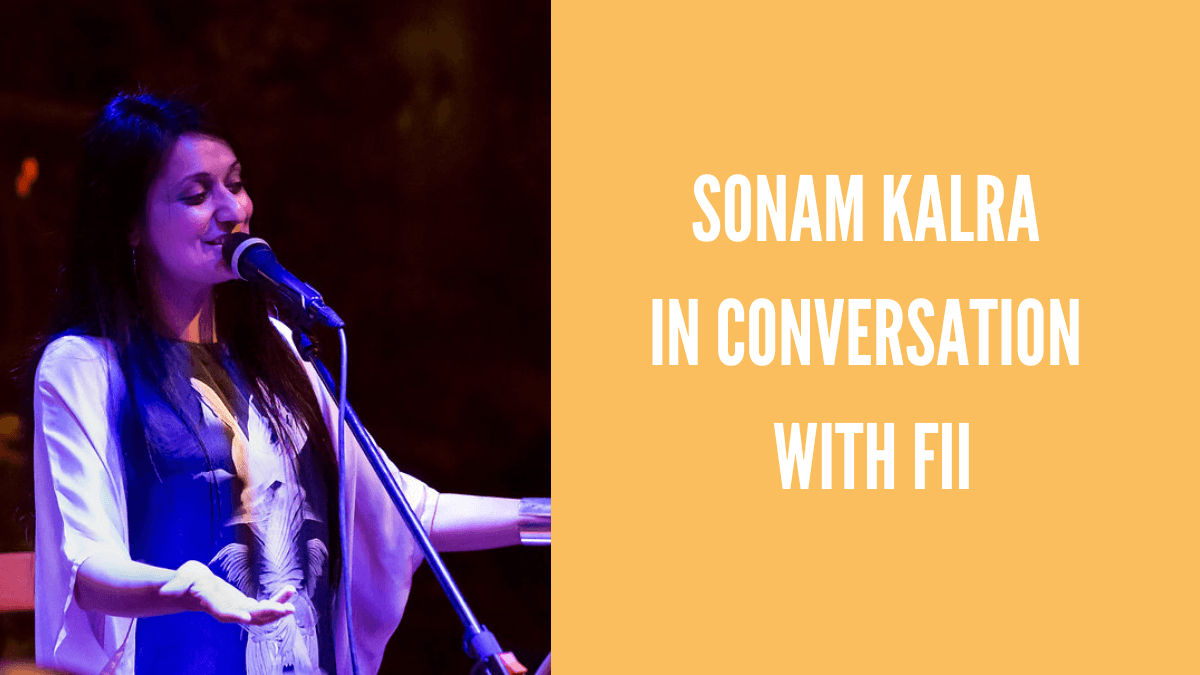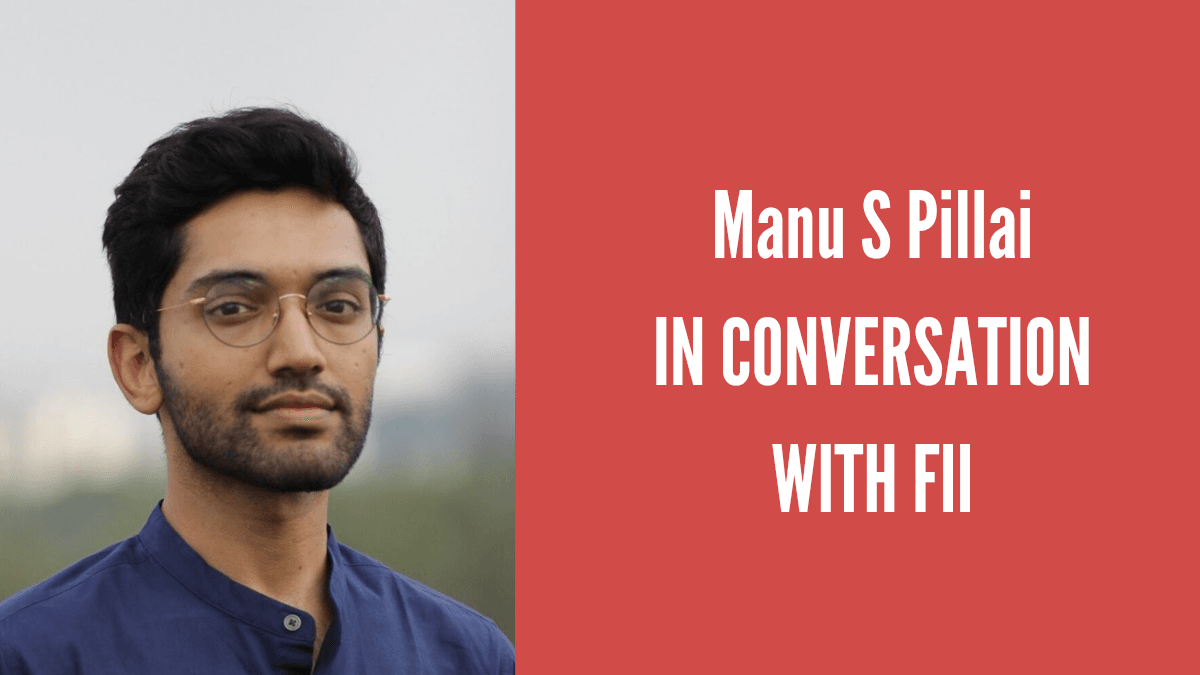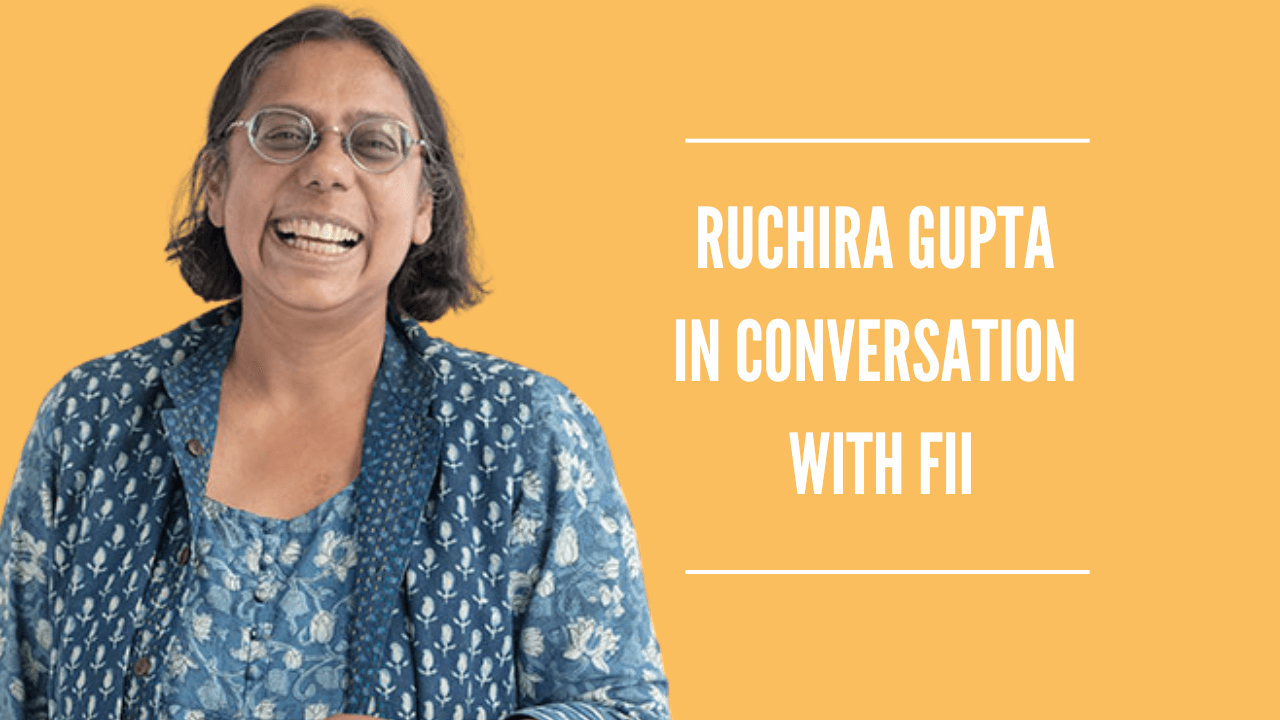ComMutiny: The Youth Collective is a collective of youth led and youth centric organisations across India. Their goal is to provide blanket support for their members and create an empowering space for young people, a space they refer to as the 5th Space.
They create public engagement initiatives, research and media projects, as well as help different youth groups, collaborate and build coalitions.
I was lucky enough to be able to speak to Kanika Sinha, a ComMutiny team member.
Jasveen Kaur Sarna: Your organization works under this concept of the 5th Space which you believe is the space young people occupy when they are in control of their own governing. How did this concept of 5th Space arrive and why is it core to your goals?

The 5th Space Logo, Via: ComMutiny website
Kanika Sinha: Through many years of working on issues of active citizenship and leadership with young people, we realised that no matter what spaces young people occupy (family, leisure, career and friends), the leadership of those spaces, or decisions in those spaces were rarely taken by young people themselves. Of what use was it, then to talk about youth leadership, if they were not truly being empowered or entrusted with decisions that affected their own lives as young people and as citizens? This is how the need to create more 5th Spaces emerged.
We didn’t name it specifically because it is envisioned as a spaced that the young people design themselves. A space where they explore their own selves, their values, their stances, and the interconnectedness between themselves and their world. It is also a space where their own leadership to act in common spaces, and their ability to take decisions is strengthened.
Our work at ComMutiny the Youth Collective is to aggregate this sort of youth development work that is happening all over the country and amplify it to further advocate for such spaces. We have no doubt that with India becoming the youngest country within this decade, there is an urgent and immediate need to empower its young citizens to explore and develop their own leadership. In a nation where choosing your prime minister is allowed at 18 but choosing your own life partner may be a taboo even in your 30s, youthhood can be a confusing time.
JKS: You describe one of the main goals of your organisation is to create active youth citizenship. What does active citizenship look like to you?
KS: Active citizenship to us is when young people recognise that they are part of a web or system and are interconnected to everything, seemingly near or far. Additionally, they also feel empowered with the skills and abilities to not just recognise this interconnectedness, but also with the abilities to act on them and influence change. It refers to many of the unanswered questions young people may have, like “How is this about me?“, or “This bothers me, but what can I do?”
JKS: Could you explain the name of your organization a little more?
KS: ComMutiny is a collective of youth led, youth engaging organisations from across the country, hence the term youth collective. ComMutiny is a play of words between community and mutiny where the belief is that the first ‘mutiny’ is within. The journey of questioning, challenging, churning and changing has to begin within and only through that process can we start bringing about a change in our communities or the world at large.
JKS: The ComMutiny Media Network, develops media workshops, highlights youth based stories and creates a support system of a variety of youth based media. What did the creation of this idea look like?
KS: CMN has served many different purposes over the last few years, but in all its avatars, the crux was always to tell stories of 5th Space experiences. Having experienced different types of media and different ways of story telling over many years, the one thing that stayed with us was that we had to create advocacy for the 5th Space work by showcasing experiences that people are creating, but we had to tell our stories in the way that our intended audience would like to hear it. Run of the mill, straightforward documentaries only appealed to a certain kind of audience, but the 5th Space work had to go all over, everyone needed to know about, young people, adults, policy makers, educators, parents – people of every demographic had to have a buy into it, and for that we had to reach them in a way that was interesting and appealing. Empathy for the audience is critical and we never forget to add some humour, while we are at it!
JKS: In many ways, you are a bridge between different organizations, why do you think it’s important to build networks, especially for youth?
KS: The power and impact of the work we do will never be seen if we work in silos. Forming a collective has allowed us to see the need and impact of youth development work in the country. At the same time, it becomes a space for learning, collaboration, and visibility of the work we do. It’s very important for like minded institutions that have similar goals and values to collaborate in order to truly amplify this work.
JKS: What are the specific steps you take to reach out to more marginalized youth in India, such as Dalit, Adivasi, LGBTQ+, and religious minorities?
KS: Youth is a demographic that is common to all other groups in India. So while youth itself is not homogeneous, many of their issues may be similar. Typically, these issues may be centered around their own aspirations, their leadership and participation and their ability to actualise themselves no matter what their identities. The Youth Collective represents youth from all kinds of demographics, religious, social and sexual minorities included and perhaps the biggest offering for these groups is creating safe spaces where they are valued citizens and where their journeys of leadership are navigated with love and their individuality is respected and their leadership is looked forward to.
JKS: I’ve noticed you uplift the arts with many of your initiatives. For instance, you’re currently running video a contest called “Youth Adda: Sustainable development goals & us”. What is the role of art and activism?
KS: For generations now, in india and globally, art and activism have gone hand in hand. There is no doubt that the most impactful and soul stirring messages have been through music, film or theatre. As I said earlier, what art does is that it allows us to empathise with the audience, to engage them with a stake and begin within them a certain churning that perhaps our mainstream media is unable to do, in its very direct and pushy manner.
 JKS: Lastly, how can readers support ComMutiny and the work that the organizations under your collective do?
JKS: Lastly, how can readers support ComMutiny and the work that the organizations under your collective do?
KS: Our website lists all our work as well as connects you to all our member organisations. Our work can be supported through donations as well as through volunteerism, both with us in Delhi as well as our partners across the country.
Featured Image Credit: ComMutiny at their Youth Collective Forum Meeting in July 2017, via ComMutiny Facebook
About the author(s)
Jasveen is currently a student at the New School studying poetry, race and ethnicity, and gender studies. You can find her either in New Delhi or New York. She's interested in gender justice, religion, diverse art, and class reform. Her twitter is: @jasveenflies




